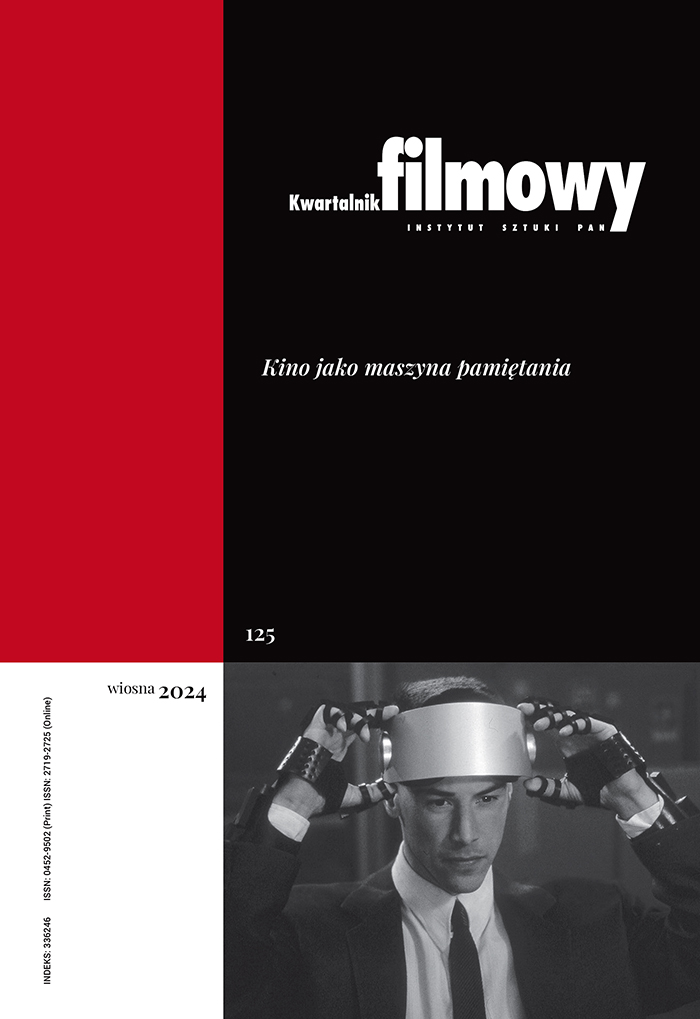“Auteurs” and the New Hollywood
Abstract
Corrigan examines authorship in the so-called New Hollywood. With the arrival of a new generation of directors (i.a. Coppola, Spielberg, Lucas, Scorsese) the policy of authors (la politique des auteurs) came to be perceived in an entirely new way whereas the filmmaker’s name alone was frequently identified with a trademark or a brand, which enabled the film distributors to sell a specific production at a good price. Names of the “great” directors served as a kind of remedy in the era of the waning American studio system. In line with such a definition of film marketing, the institution of the author was to serve as the guarantee of communication between the audience and the film. The author alone ceased to be a vague presence (like the literary author or like the author promoted in European films) but became a representative of big business. What’s more, “being the auteur” turned into a business. Corrigan also points out that the emergence of the contemporary auteur in the New Hollywood was influenced by three major changes in the film culture: the increase in the number of blockbusters made by syndicated film studios, the emergence of films made by the mini-major studios and the importance of the technology of home video. Corrigan also points to the characteristic figure of the auteur-star (auteur defined by his commercial star status) in which two significant groups of authors can be distinguished: commercial “auteur” – e.g. Mel Gibson or Robert Redford and “auteur” of commerce – e.g. Steven Spielberg or Brian de Palma. Citing Barthes’s essay, Corrigan closes his tekst by concluding that as auteurs “function” in such a commercialised form, they are far from being dead – on the contrary, they are more vital today than ever.
- The text is a translation of the chapter from the volume The New American Cinema, ed. Jon Lewis, Duke University Press, Durham 1998. © 1998 by Duke University Press.
Keywords:
New Hollywood, cinéma d’auteur, policy of authorsReferences
Nie dotyczy / Not applicable
Google Scholar
Authors
Timothy Corrigankwartalnik.filmowy@ispan.pl
University of Pennsylvania United States
Profesor na University of Pennsylvania. Opublikował m.in.: New German Film: The Displaced Image (1983), The Films of Werner Herzog: Between Mirage and History (1986), Writing About Film (1989), A Cinema Without Walls: Movies and Culture After Vietnam (1991), Film and Literature: An Introduction and Reader (1999), The Film Experience (2004).
Statistics
Abstract views: 210PDF downloads: 120
License
Copyright (c) 2007 Timothy CorriganThe author grants the publisher a royalty-free non-exclusive licence (CC BY 4.0) to use the article in Kwartalnik Filmowy, retains full copyright, and agrees to identify the work as first having been published in Kwartalnik Filmowy should it be published or used again (download licence agreement). The journal is published under the CC BY 4.0 licence. By submitting an article, the author agrees to make it available under this licence.
In issues from 105-106 (2019) to 119 (2022) all articles were published under the CC BY-NC-ND 4.0 licence. During this period the authors granted a royalty-free non-exclusive licence (CC BY-ND 4.0) to use their article in „Kwartalnik Filmowy”, retained full copyright, and agreed to identify the work as first having been published in our journal should it be published or used again.











